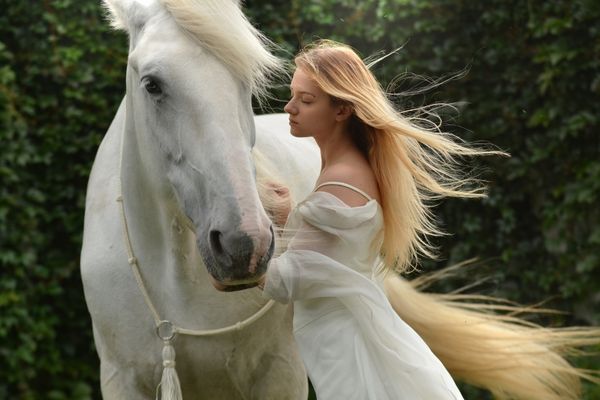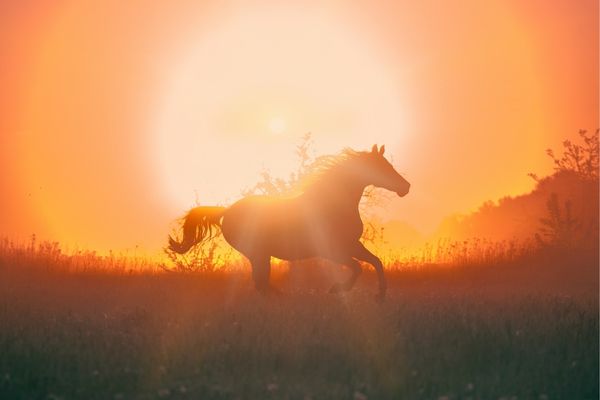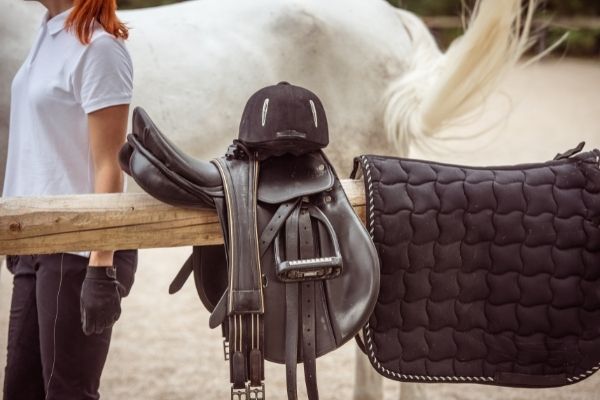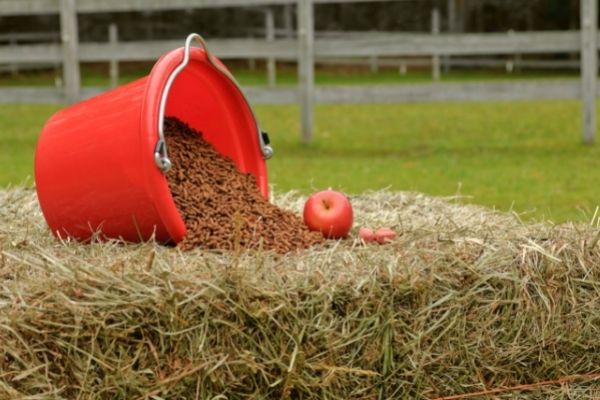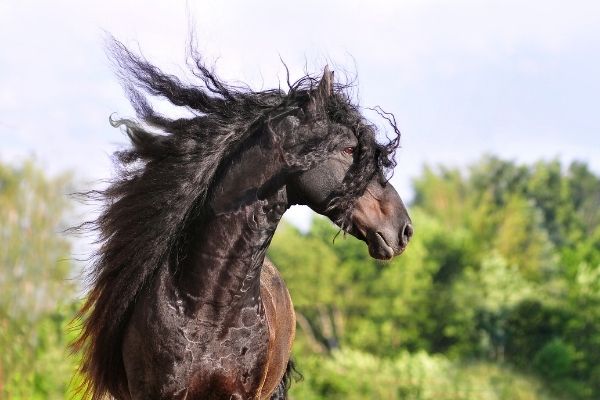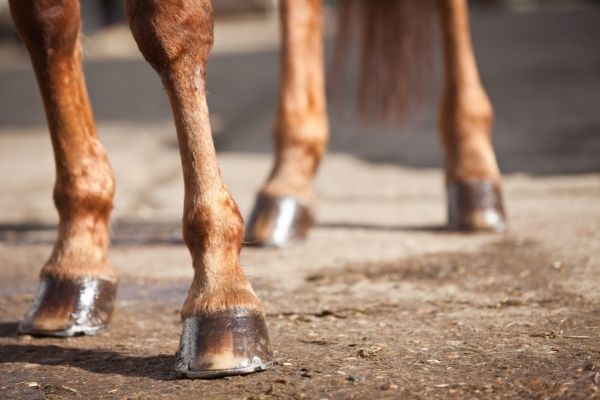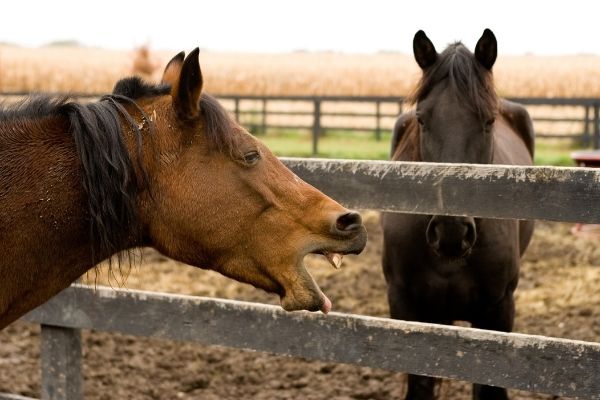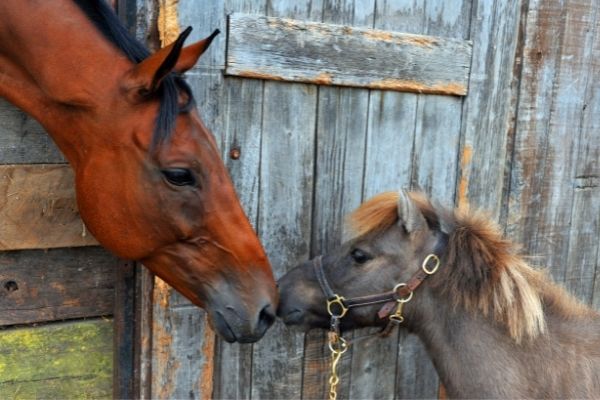Der Beitrag Fruits and vegetables for horses – Which ones horses are really allowed to eat? erschien zuerst auf ehorses Magazine.
]]>Horses love to eat fruits and vegetables as treats. Whether it be after a ride or just in between. Horses are delightedly offered apples in particular. However, other snacks like bananas or carrots are also well-liked snacks. In this article, we outline which fruits and vegetables are safe to feed to horses and which ones you should steer clear of. A table with an overview is included at the end!
Variety of fruits and vegetables for horses
Humans would all enjoy eating something new every day because we are lovers of variety. We believe that our horses should also experience variety for this reason. These are probably the types that most horse owners allude to: an apple, a carrot, or even a fennel. If that’s not diverse enough for the owners, they may opt for more exotic fruits or vegetables. Beetroot or watermelon, for instance. Yet, not everything that appeals to our senses as humans does the same for horses. Quality counts, is the fundamental tenet. Since the horse’s stomach is particularly sensitive, top quality fruits and vegetables are essential. They must not be mouldy, rotting, or overripe.
Which fruits are suitable for horses?
As a general rule, fruits for horses should only be fed in small amounts, as the fructose content is high. Palatable fruits are apples, bananas, pears, peaches and watermelon.
Which fruits are digestable?
You are probably wondering – which fruits can my horse digest? We have compiled a list of all well digestible fruits.

Apple
You’ve probably already realised this, but horses adore apples. Which is advantageous! Apples are perfectly fine, provided they are consumed in the proper quantities since they contain fructose. To reduce the chance of a pharyngeal blockage, the apples should be cut beforehand.
Bananas
The sweet, yellow fruits are adored by many horses. However, due to the high fructose content, they are highly sweet. Because of this, you can feed your horse bananas as a treat or a snack if he enjoys them. Please do not add bananas to your horse’s everyday diet; just feed them in modest amounts. Most essential, don’t feed with skin on!
 Pears
Pears
The same rule that applies to apples also applies to pears: they can be fed, but it is preferable if they are sliced into little pieces. Due to their high sugar content, pears should only be fed in reasonable amounts. Horses who eat large quantities of pears may develop colic.
 Peaches
Peaches
Peaches are considered to be drupes. They have a high sugar content and a propensity to ferment, which can quickly result in colic. Therefore, feeding peaches should really only take place in very little amounts if you really want to. Try to avoid feeding peaches, just to be on the safe side. By the way, the fruit’s core must be removed! Otherwise, pharyngeal blockage could directly increase the risk of colic.
 Watermelons
Watermelons
For us people, a watermelon is a refreshing snack on a hot summer day. But can we feed watermelon to our large four-legged buddies as well? Yes, watermelons are safe for horses to consume. But this ought to be fed without the rind and, ideally, without the seeds. The fruit should only be had as a snack in between meals because, despite having a high water content, it also contains a lot of sugar.
What kind of fruits and vegetables horses can eat?
Horses do not digest every kind of fruit and vegetable. You can safely feed apples, bananas, pears, peaches, watermelon, carrots, beet and lettuce. However, make sure that the fruits and vegetables are of high quality and that you only give them in small quantities.
Which vegetables are digestable?
To expand the list of digestible fruits, we would like to show you which vegetables can be fed.
 Carrots
Carrots
Everyone has undoubtedly used the carrot to reward his beloved four-legged friend. And that’s just fine! Every day, the carrot can likewise fall guilt-free into the feed bucket. A small amount per day should be maintained, nevertheless. This vegetable has a lot of sugar, which may cause colic. Additionally, the carrot’s green part should always be removed first.
 Beetroot
Beetroot
The same rules apply to beets as they do to carrots. The red beet may be fed. Pay attention to the quantities because lower amounts are advised here as well.
Lettuce
Lettuce and a horse? The taste of the crisp greens is indeed appealing to certain horses. In modest amounts, this snack is also quite digestible for horses who enjoy lettuce.
Do bananas benefit horses?
Yes, because they are rich in vitamins and have a sweet taste, horses digest bananas well. But before feeding them, the peel needs to be removed. Additionally, they shouldn't be included in the daily feeding routine and should only be provided in modest amounts as a snack.
Which fruits and vegetables should I avoid?
The majority of fruits are beneficial in moderation, even for the wellbeing of horses. But one thing is certain: drupe fruits should be absolutely avoided if possible. This includes nectarines and plums. In horses, the seeds can cause pharyngeal obstructions. Colic will most likely start to develop. These fruits exhibit significant fermentation. Pineapple and grapes should also be avoided. These contain a lot of sugar. As a result, the growth of yeast fungus in the intestine is encouraged.
Citrus fruits of all kinds (oranges, pineapples), berries, and grapes are other banned fruits. Grapes must not be fed because of their high fructose content. Avocados should never, under any circumstances, be fed. Horses are poisoned by avocados. They can potentially result in fatal respiratory distress and colic! For horses, avocados are an absolute no-go.
All cruciferous vegetables are included in the list of forbidden foods. Horses experience flatulence as a result of these. Among them are kohlrabi (German turnip), Brussels sprouts, broccoli, and cauliflower. Potatoes are not for horses, despite the fact that we humans, particularly Germans, adore them. In fact, eating them uncooked makes them poisonous. Additionally forbidden are tomatoes, onions, peppers, and cucumbers.
Fruits and vegetables for horses – list to take a note of
Here, we provide you with a list of all acceptable and prohibited fruits and vegetables to note. Just write them down or copy them out onto paper. If you’re ever confused, you can check the list to ensure that nothing is being fed incorrectly.
These sorts are digestible
Fruits | Vegetables |
Apples | Carrots |
Bananas | Beetroot |
Pears | Lettuce |
Watermelons | |
Peaches |
These sorts are a no-go
Fruits | Vegetables |
Pineapples | Broccolis |
Avocadoes | Cucumbers |
Berries | Potatoes |
Figs | Cabbages |
Cherries | Peppers |
Citrus fruits | Radishes |
Grapes | Tomatoes |
Onions | |
Rhubarbs |
Der Beitrag Fruits and vegetables for horses – Which ones horses are really allowed to eat? erschien zuerst auf ehorses Magazine.
]]>









